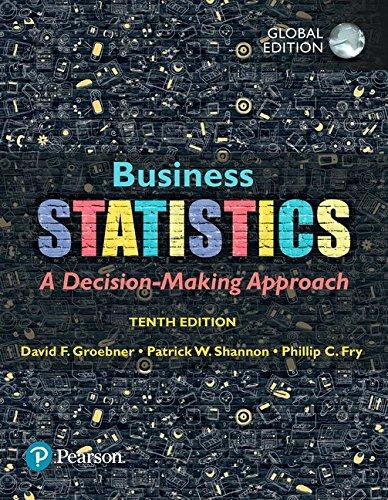Living donor kidney transplants are becoming more prevalent with the advent of kidney exchanges such as the
Question:
Living donor kidney transplants are becoming more prevalent with the advent of kidney exchanges such as the National Kidney Registry (NKR). In order for a transplant to take place, there needs to be a good match between a willing donor and the recipient. Many factors must be considered in an effort to try to maximize the number of years the transplant will last. One factor of interest is the age of the donor. The following regression model was developed from a sample of living donor transplants that have been performed since 1987. The sample data are in a file called Kidney. The dependent variable is actual kidney life years (KLYs), which is the number of years from the time the transplant was performed until the kidney failed. (Source: OPTN/SRTR 2012 Annual Data Report, http://srtr.transplant.hrsa.gov.)
SUMMARY OUTPUT Regression Statistics Multiple R 0.025856023 R Square 0.000668534 Adjusted R Square -0.007262668 Standard Error 8.951033668 Observations 128 ANOVA df SS MS F Significance F Regression 1 6.753529839 6.75353 0.084292 0.772040921 Residual 126 10,095.24647 80.121 Total 127 10,102 Coefficients Standard Error t-statistic p-value Lower 95% Upper 95%
Intercept 18.40339162 2.6083577 7.055547 1.02E-10 13.24152841 23.56525482 Donor Age at Donation 0.019323404 0.066556645 0.29033 0.772041 20.11239024 0.151037048
a. Based on these data, can we conclude that older donors are associated with a lower number of kidney life years? Test using an alpha = 0.10 level.
b. What percentage of the variation in KLYs is explained by donor age?
c. Based only this regression model, should transplant centers use donor age as a donor selection criterion?
Explain.
Step by Step Answer:

Business Statistics
ISBN: 9781292220383
10th Global Edition
Authors: David Groebner, Patrick Shannon, Phillip Fry






